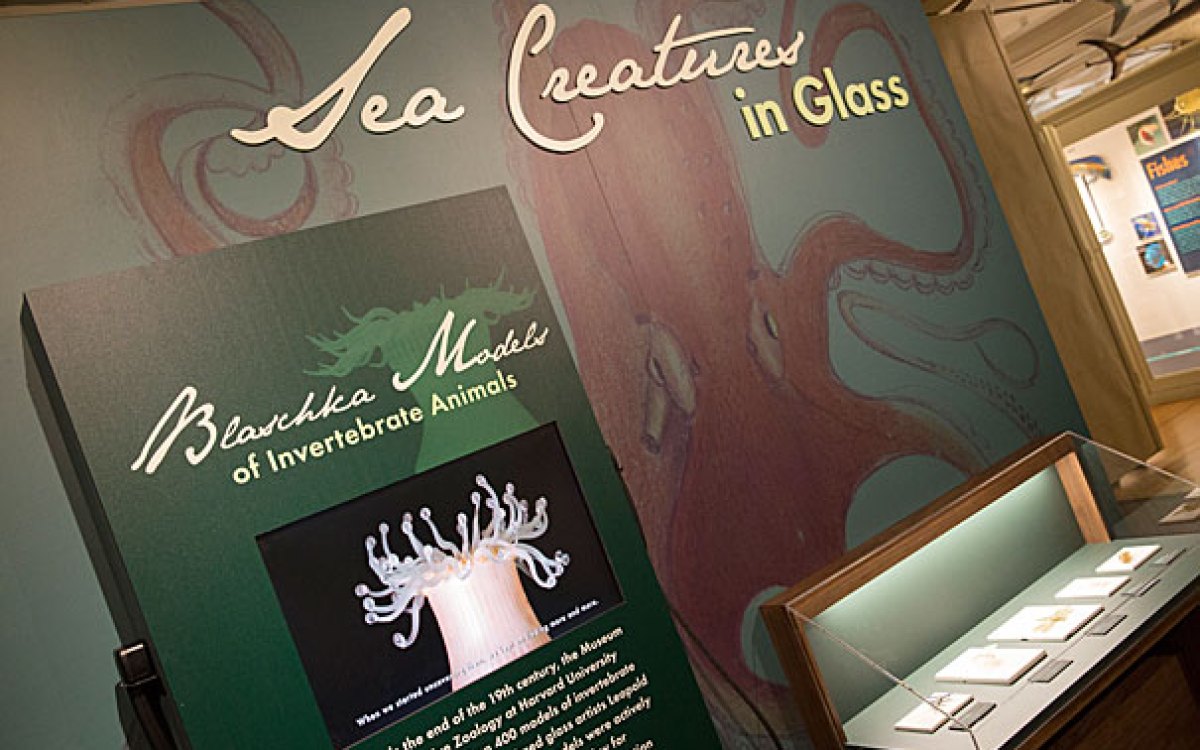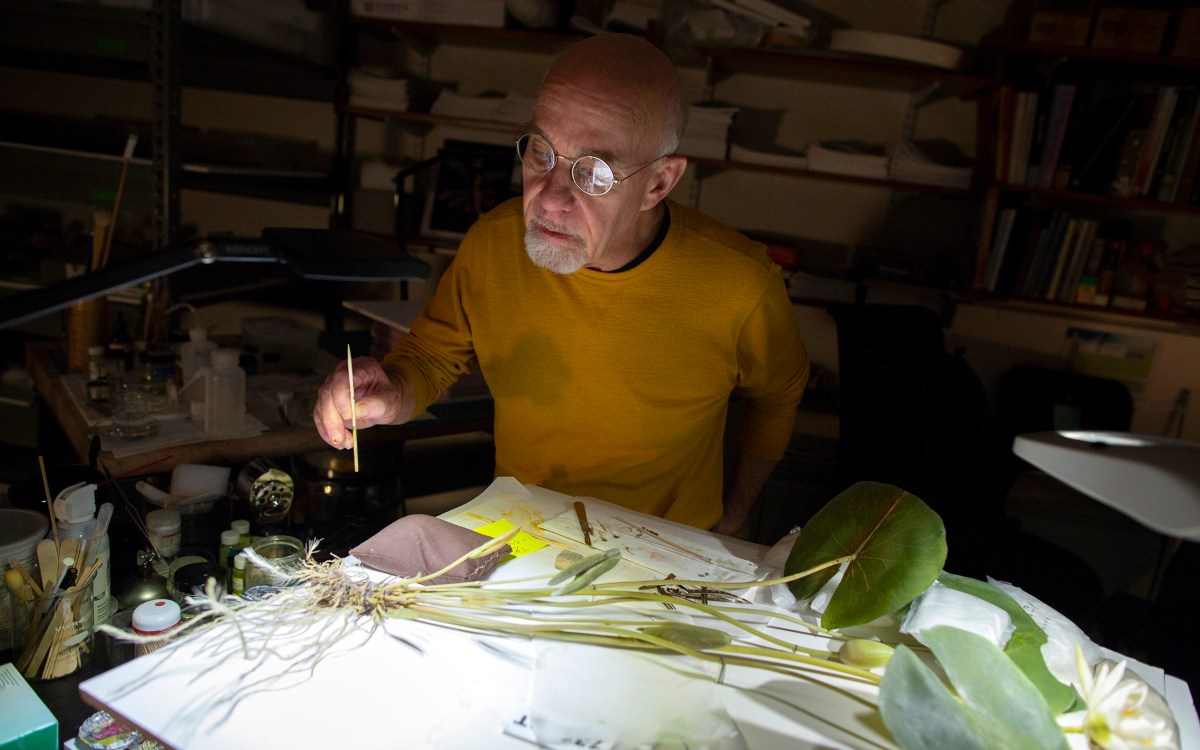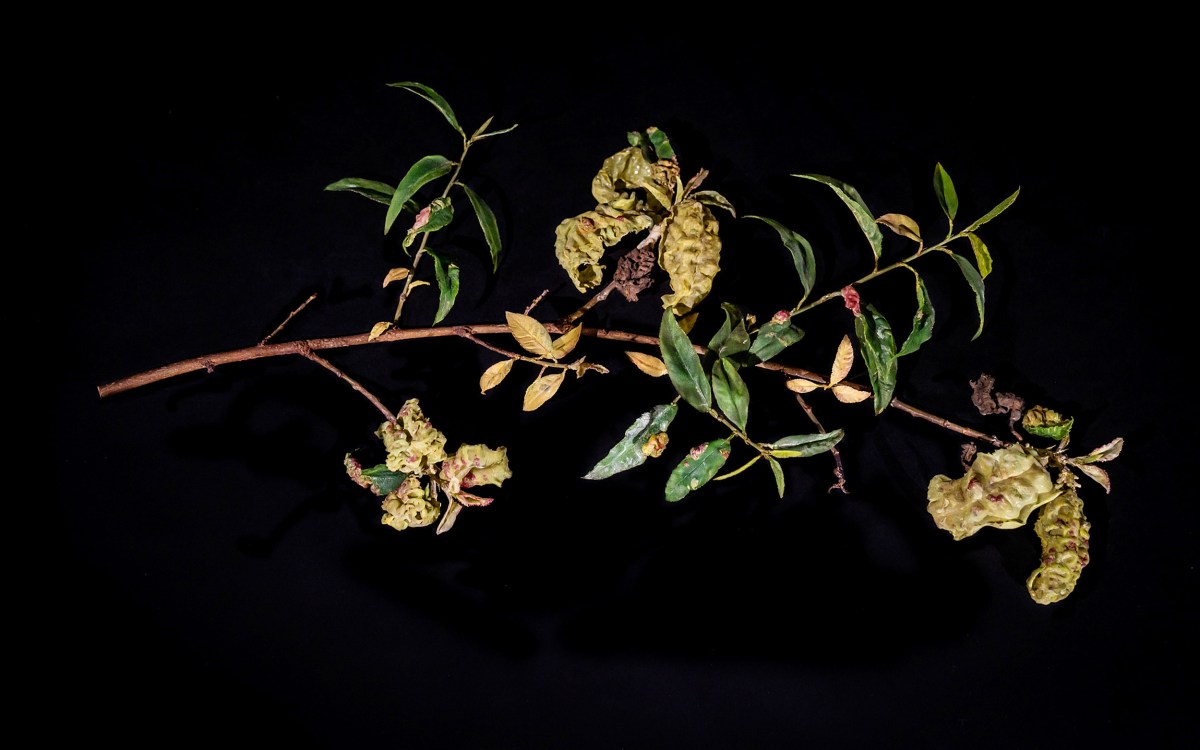Images courtesy of Harvard Museum of Comparative Zoology
A model of how museums can share their collections more widely
3D images of 19th-century glass marine invertebrates go online
Five researchers set out three years ago to capture the full beauty of a museum’s famous glass models through images. Today, there are interactive and three-dimensional models of a blue button jellyfish, a stout bobtail squid, and sea anemone that reveal their flower-like tentacles to both in-person visitors and those online.
“Museum professionals are extremely proud of and excited about the collections in their care, and at the same time they are frustrated that many other people don’t get to see those objects,” said James Hanken, Alexander Agassiz Professor of Zoology, curator of herpetology and director of the Museum of Comparative Zoology (MCZ). “By developing a novel imaging technique that provides high-quality 3D images of the glass animals, we are helping people far from Harvard to learn about and appreciate these spectacular specimens.”
Touch or click and drag your mouse to explore. View more 3D models.
The researchers successfully digitized 19th-century glass models of 15 marine invertebrates made by Rudolf and Leopold Blaschka. In order to capture the intricacy, detail, and glossy surfaces of these models, the researchers took 250 to 700 images of each invertebrate, created specific lighting, and, for the more challenging models, administered X-ray computed-tomography (CT) scans. The full team is made up of Hanken and MCZ curatorial assistant Jonathan Woodward as well as Peter Fried (NYU Tandon School of Engineering), David Brown (Herbert F. Johnson Museum of Art, Cornell University), and Drew Harvell (Cornell University).
“Handling the Blaschka models requires focus and patience, but it’s such a genuine pleasure to pay focused attention to such beautiful and intricate objects,” said Woodward, who performed the micro-CT scans. “I’m especially pleased to have contributed to a process that will share these unique objects more widely and more faithfully than ever before.”
“The technique we’ve developed for combining CT and photogrammetry scans is generic, insofar as it can work, in principle, for any complex and highly reflective glass specimen. It should be of interest and use to all kinds of museums,” said Hanken. “We would love nothing more than to have other institutions use our technique to reveal the beauty and intricacy of their objects, as well as ours.”








